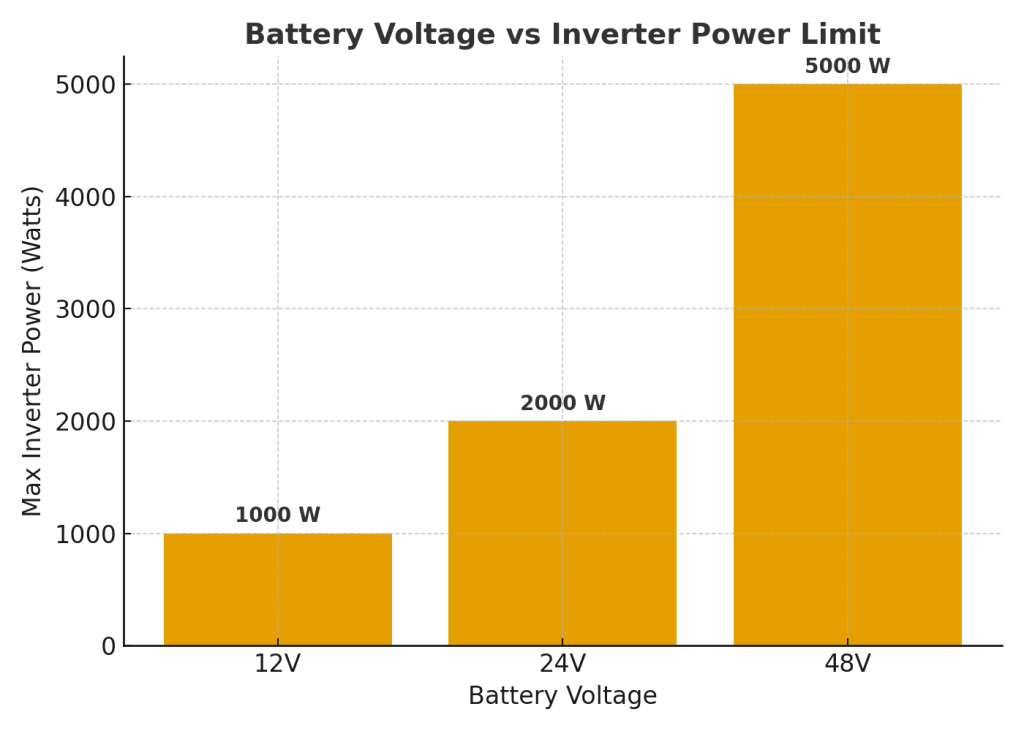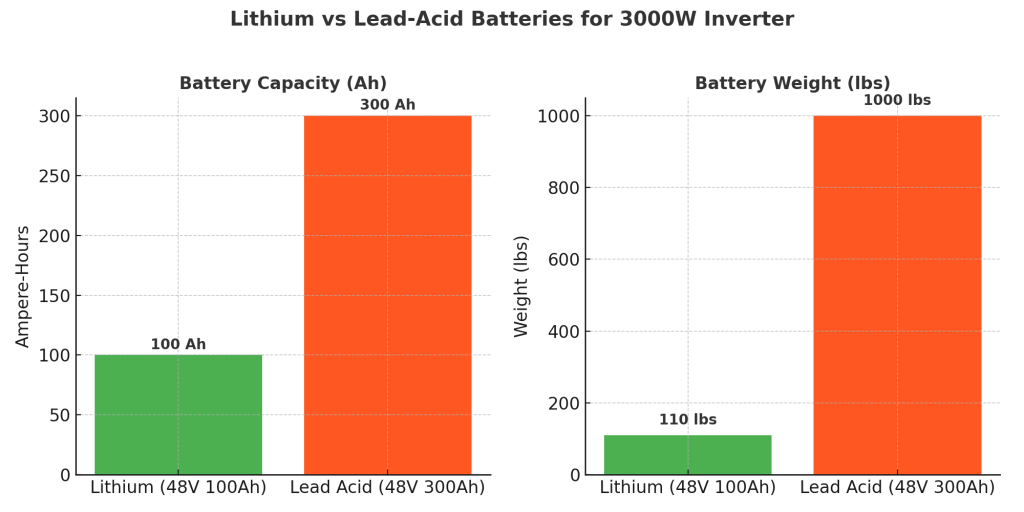If you’re planning to run a 3000-watt inverter, one of the most important questions you’ll face is: how many batteries are required? This is a critical decision because the wrong battery setup can shorten battery life, reduce efficiency, and even damage your inverter. In this article, we’ll break down the exact battery requirements for a 3000W inverter, compare lithium vs lead-acid options, and guide you step by step with real calculations.
Why Battery Sizing Matters for a 3000W Inverter
Choosing the correct battery bank is essential for three main reasons:
-
✅ Prevents battery damage and short lifespan
-
✅ Improves efficiency of your solar or backup power system
-
✅ Saves money by avoiding oversizing or undersizing batteries
Many people make the mistake of connecting a 3000W inverter to a single 12V 100Ah battery. This setup cannot handle the load, which leads to overheating and early battery failure. To avoid this, you need to understand two key factors: battery voltage and capacity.
Battery Voltage vs Inverter Size

The higher the battery voltage, the more power your inverter can safely handle. Here’s a simple guideline:
-
With a 12-volt battery, limit the inverter to about 1,000 watts.
-
With a 24-volt battery, you can safely run around 2,000 watts.
-
With a 48-volt battery, you can handle up to 5,000 watts.
👉 For a 3000W inverter, a 48V battery system is the best choice.
Calculating Battery Requirements for a 3000W Inverter
Step 1: Basic Calculation
Divide inverter power by battery voltage:
-
3000 watts ÷ 48 volts = 62.5 amperes
To stay on the safe side, apply a safety factor of 125%:
-
62.5 amperes × 1.25 = 78 amperes
This means you’ll need an 80A fuse, which is still under the 100A current limit.
Step 2: Understanding the C-Rate
Every battery has a recommended charge and discharge rate, called the C-rate.
-
Lithium batteries usually support 1C (can safely deliver their full rated current).
-
Lead-acid batteries usually support only 0.2C (can safely deliver about 20% of their capacity).
Lithium Battery Example
A 100Ah lithium battery at 48V can safely deliver up to 100 amperes. Since the inverter needs 62.5 amperes, this works perfectly.
👉 Recommended setup:
-
One 48V 100Ah lithium battery (such as a rack-mounted server battery)
-
OR four 12V 100Ah lithium batteries in series
-
OR two 24V 100Ah lithium batteries in series
This configuration is compact, efficient, and long-lasting.
Lead-Acid Battery Example
A 100Ah lead-acid battery can only safely deliver 20 amperes (because 100Ah × 0.2C = 20A).
For a 3000W inverter needing 62.5 amperes:
-
62.5 ÷ 20 = 3.1 → You need at least three 100Ah lead-acid batteries in series-parallel.
👉 Recommended setup:
-
A 48V 300Ah lead-acid battery bank
-
Typically configured as 4 strings of 12V 100Ah batteries connected in series, and then paralleled for capacity
⚠️ Note: Lead-acid will be three times larger, much heavier (close to 1000 lbs), and less efficient compared to lithium.
Lithium vs Lead-Acid: Which is Better for 3000W?

| Feature | Lithium (48V 100Ah) | Lead-Acid (48V 300Ah) |
|---|---|---|
| Capacity Needed | 100Ah | 300Ah |
| Safe Current | 100A | 60A |
| Weight | ~110 lbs | ~1000 lbs |
| Lifespan | 8–12 years | 2–4 years |
| Cost | Higher upfront | Cheaper upfront |
| Efficiency | Very high | Moderate |
✅ If budget allows, lithium is always the smarter choice for a 3000W inverter.
Recommended Batteries & Inverter Setup
If you are planning to build your own battery bank for a 3000W inverter and want reliable options, here are my top picks:
-
✅ Lithium 12V Batteries – Check on Amazon
-
✅ 48V Server Rack Lithium Battery – Check on Amazon
👉 These are high-quality, long-lasting choices that provide excellent performance for off-grid and backup power systems. If you decide to buy, using these links helps support this website at no extra cost to you. Thanks for your support!
Conclusion
To power a 3000-watt inverter correctly:
-
Lithium setup: One 48V 100Ah battery (ideal)
-
Lead-acid setup: One 48V 300Ah battery bank (much larger and heavier)
By choosing the right battery type and capacity, you’ll get maximum lifespan, efficiency, and value from your inverter system. Always respect the C-rate and avoid undersized batteries if you want your system to run reliably.
👉 For more battery and inverter guides, check out Battery Hacker!
Leave a Reply